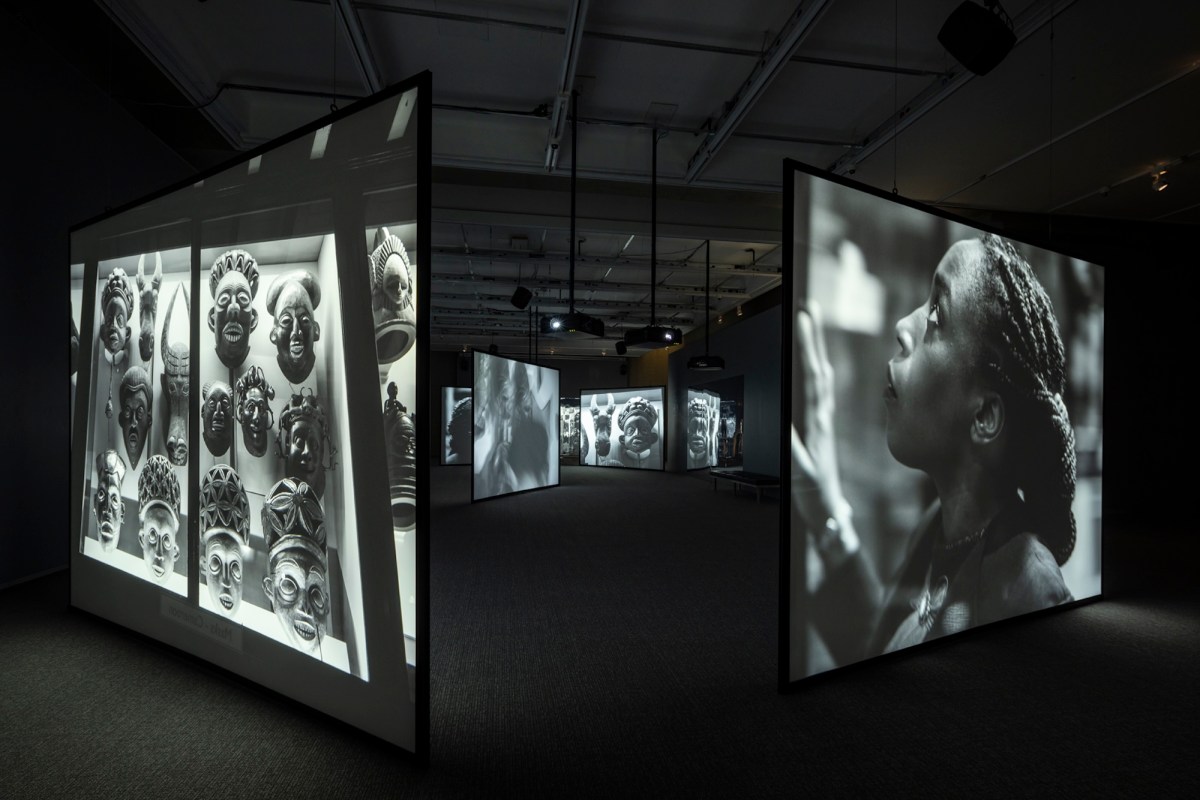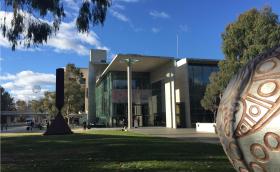British artist Sir Isaac Julien is no stranger to Australia. He has been presenting work here since 2007, when he first showed a suite of photographs with Roslyn Oxley9 gallery (Sydney), and was subsequently included in the 17th Biennale of Sydney (2010) with his multi-screen work, Ten Thousand Waves.
Indeed, as the presentation of his latest major multi-screen video work, Once Again… (Statues Never Die) (2022) opens at the Museum of Contemporary Art Australia (MCA), across town Roslyn Oxley9 is supporting it with an exhibition of photographic images drawing on the same topic.
What Australian audiences can trace, then, is a consistent thread of research-based work, which is presented with the lightest, poetic touch, and yet runs deep to the thorniest topics of the day.
Once Again… (Statues Never Die) in many ways takes its cue from Chris Marker’s 1953 film, Statues Also Die, which was banned France when it was made. Both look at the impact of colonial collecting of African art. The conversation of restitution and repatriation, however, has come a long way since then, and Julien updates the topic with a currency of today.
The nine-screen installation has a nostalgic tone to it – filmed in black-and-white and superbly staged with 1920s chic – it has a luscious appeal of its own. And yet, it is a funny twist of voyeurism as, central to the film is the role of the gaze, and a kind of empowerment or shifted agency, as the black male usurps that colonial gaze – or to use a phrase in the film’s dialogue – the “trophies of colonialism”.
The film’s narrative is plotted as an exchange of letters between Albert C Barnes (1872–1951), an early collector of African material culture in the US and founder of the Barnes Collection (Philadelphia, US), and the first African-American Rhodes Scholar and a key figure of the 1920/30s cultural movement known as the Harlem Renaissance, Alain Locke (1885-1954). It is both simple and complex.
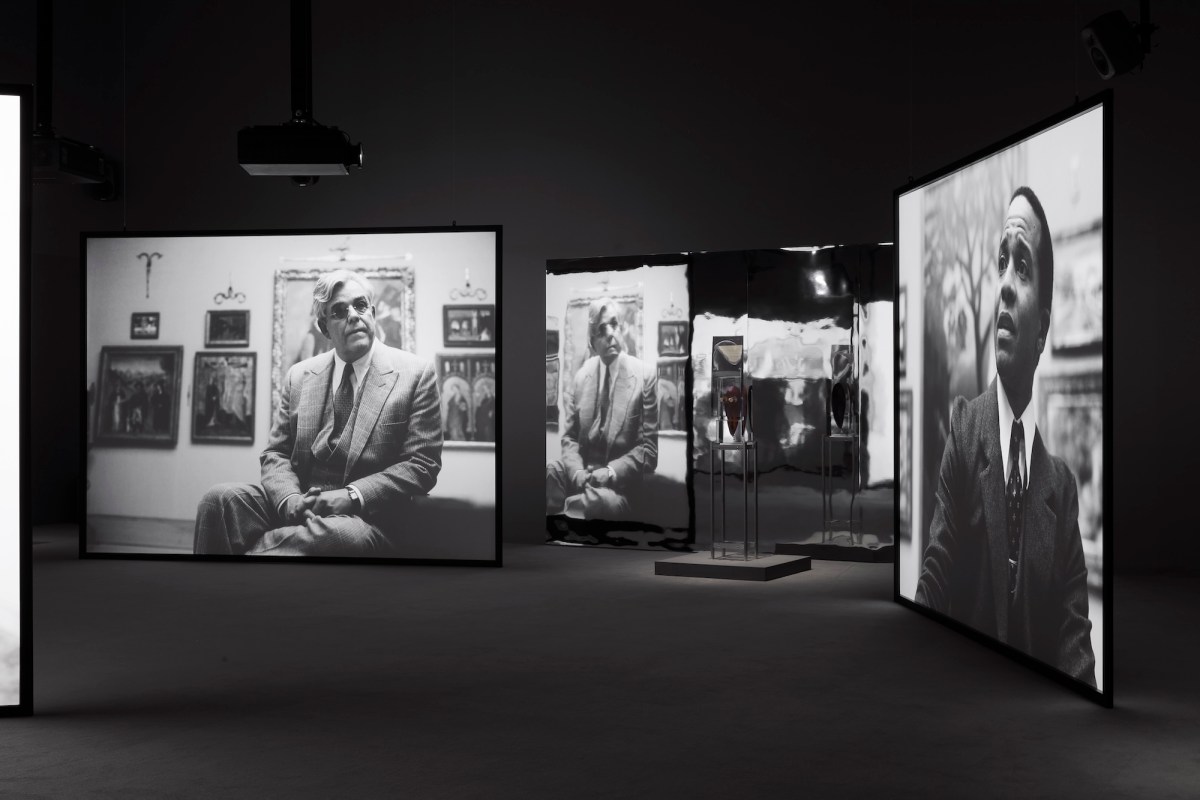
The film starts with those trophies – aka African statues in traditional museum cases. The repeated phrase heard is “memory is the master of death”. As one is immersed in this video piece, moving around its floating screens and sidling past loaned African objects in pristine museum cases – they seemingly drift, as if in a dream space, eclipsing time past and present.
The film stars actor André Holland (Moonlight and Passing) as Locke, Danny Huston (Succession and Marlowe) as Dr Barnes, with Devon Terrell playing sculptor Richmond Barthé – who has a flirtatious attraction with Locke.
This film follows on from Julien’s celebrated filmic work Looking for Langston (1989), continuing its exploration of the queer subculture of the Harlem Renaissance. But it is almost a sub-plot in this new work.
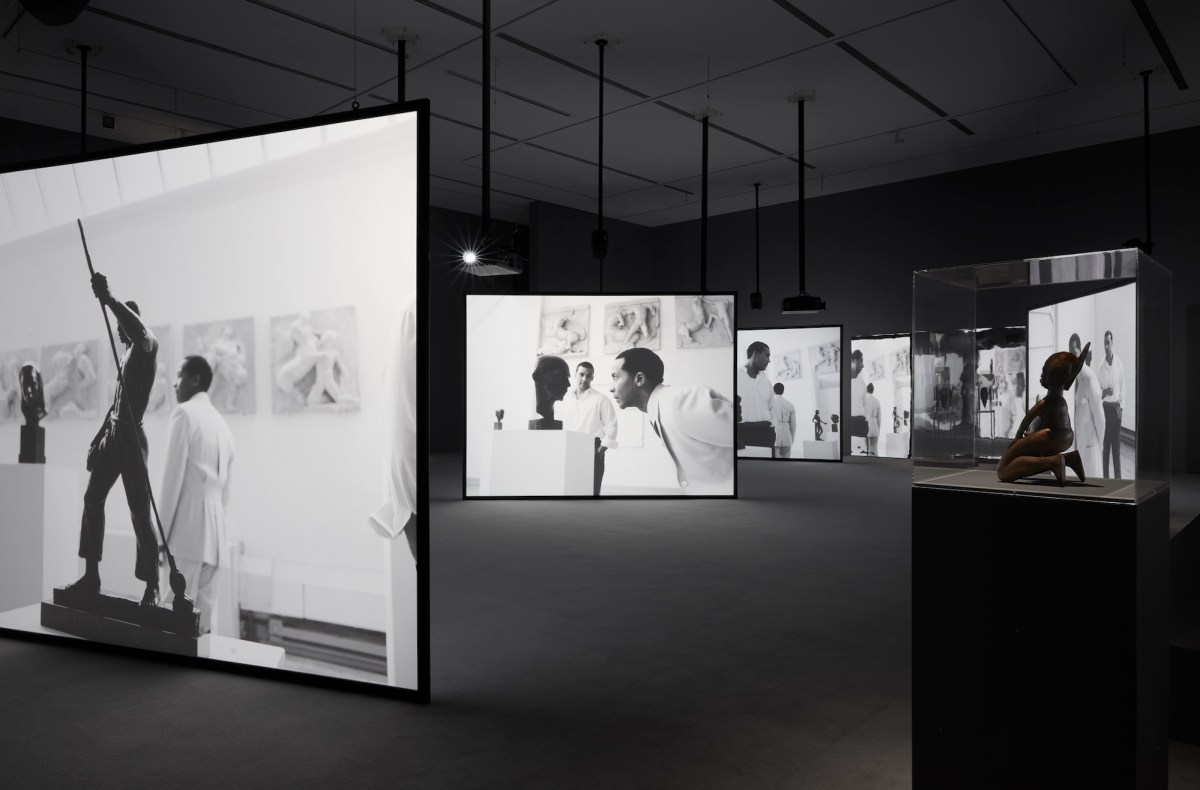
Sharlene Whyte (Small Axe and Lessons of the Hour) is the curator, and offering a key cameo is singer and songwriter Alice Smith.
That all sounds very matter of fact. But Julien has created a video installation that is far more than the regurgitation of letters and history’s record of black culture in museums, and the rise of Black Modernism.
Read: Exhibition review: Tennant Creek Brio: Juparnta Ngattu Minjinypa Iconocrisis, ACCA
A great indicator is a scene later in the film: the young African protagonist stands in delicate snow drifts, dressed in a dinner suit, its soft fall dusting him in ‘whiteness’ like icing sugar. He is incredibly dashing and this idea of a blatant reading of the ‘primitive’ and the sophisticated Renaissance man – finely dressed, educated and comfortable with lavish interiors – screams through the film’s softness.
The voiceover (presumably his) narrates: “…connections and cultures in the dream world of art, I am all I want to be; it transports me outside of time,” continuing, “we let go of race, sexuality, nationality… We breathe… We mature as artists, as a culture of infinite possibilities is ready to receive us – this is our freedom, as unsullied as falling snow.”
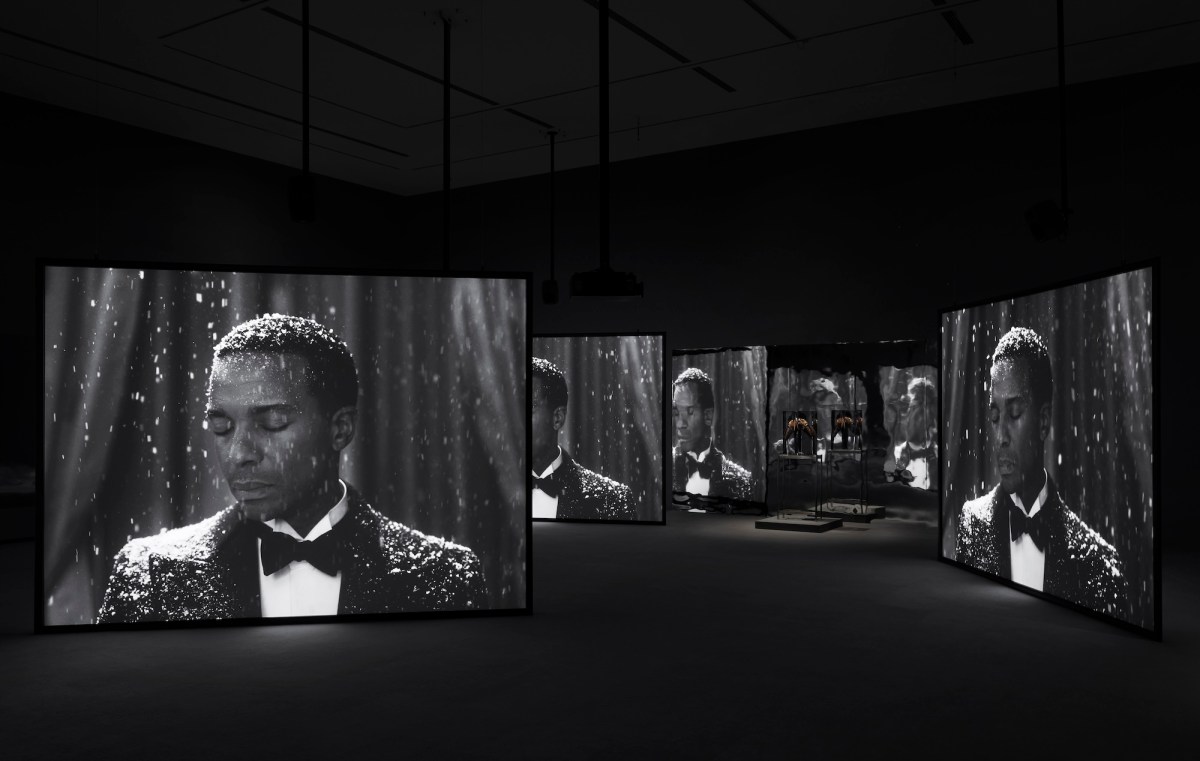
Quotes from poets Aimé Césaire and Langston Hughes are also drawn across the film.
While archival histories are a foundation to this piece, they must not be allowed to overshadow the visceral experience of the work. The soundscape is beautifully mixed across the screens, guiding our eye at times, and washing over us at others. It is easy to fall into the rhythm of its poetic delivery, and then be led into deep thinking. This is slow art at its best.
Julien has mastered that precipice – where we teeter into sheer pleasure of letting the film’s beauty wash over us, and then pulling us back with hard questions. A great example is Alice Smith’s sung words: “Once again, I defend.”
Once Again… (Statues Never Die) lacks the aggressions of some activist works, and yet its message is clearly a call to activist thinking – if not action.
Further still, making the point, is a line from the film – perhaps the best one for us to leave with – as a white-glove clad museum work examines archival photos of Black histories: “The secrets contained of others dry up, our hearts call on all the museum of the world … for human empathy.”
What grounds this piece are the nine objects that are peppered around the edges of the floating screens, borrowed from the Australian Museum. They are drawn from the Museum’s 19th and early 20th century collection of African art, and are expanded with further loans of works by Barthé (1901-1989), who appears in the film.
The film is also interspersed with archival footage of a male artist painting at the foot of the Brooklyn Bridge in New York, and shots of looted African artworks held by the British Museum.
Read: Exhibition review: Primavera 2024: Young Australian Artists, MCA
Isaac Julien is one of Britain’s most influential and critically acclaimed artists – and viewing this groundbreaking work it is easy to understand why, as he seamlessly fuses film, photography, sound, archives, poetry and installation to address issues of race, gender and cultural identity in our times. It is a piece of sheer brilliance.
It is also an instructive piece, as Australia considers its own history of collecting First Nations cultural object, and contemporary agency of presenting their voices in our collecting institutions today.
Isaac Julien: Once Again… (Statues Never Die) (2022)
Museum of Contemporary Art Australia, Level 1 Macgregor Gallery
27 September – 16 February 2025.
Free.

